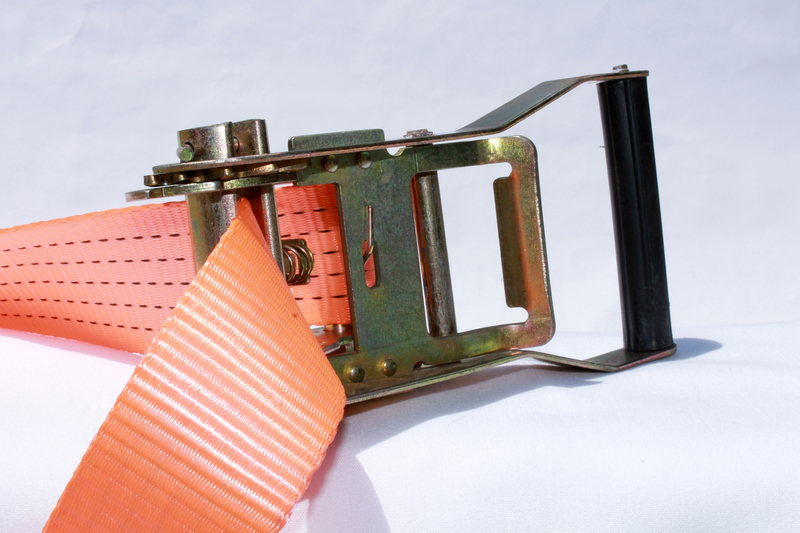Expert Suggestions to Preserve Your Sofa During Prolonged Storage
Posted on 17/05/2025
Expert Suggestions to Preserve Your Sofa During Prolonged Storage
Are you planning to store your beloved sofa for an extended period? Whether you are relocating, redecorating, or simply making space at home, ensuring your sofa remains in pristine condition while in storage is crucial. Prolonged storage can expose your couch to a range of potential hazards--dust, moisture, pests, and even sunlight--leading to undesirable wear and tear. Fortunately, with thoughtful planning and expert preservation methods, you can maintain your sofa's appearance, durability, and comfort through long-term storage.

Why Proper Sofa Preservation Matters
Your sofa is more than just a piece of furniture; it's an investment in comfort and style. Inadequate protection during storage can result in faded fabrics, warped wood, unpleasant odors, and even mold growth. To avoid costly restoration or replacement, taking proactive measures using tried and tested preservation strategies is essential. This comprehensive guide will provide expert suggestions to preserve your sofa during prolonged storage and ensure it is ready for use when you retrieve it.
Comprehensive Preparation: The Foundation of Sofa Preservation
Before moving your sofa into storage, detailed preparation is non-negotiable. Here's how to get started:
1. Deep Cleaning Your Couch
- Vacuum thoroughly: Vacuum all sofa surfaces--including cushions, crevices, and underneath the seat--using an upholstery attachment. Removing dust, crumbs, and debris prevents staining and deters pests.
- Use fabric-appropriate cleaners: Check the manufacturer's label for recommended cleaning methods. Wipe leather sofas with a damp cloth and use specialized leather conditioners. For fabric couches, spot clean stains with mild detergent or upholstery cleaner to avoid set-in marks during storage.
- Allow to dry completely: Avoid locking in moisture, as dampness can foster mold and mildew during prolonged storage. If possible, leave the cleaned sofa to air dry overnight.
2. Disassembling Parts When Possible
- Remove cushions and legs: If your sofa has detachable cushions, arms, or legs, take them apart for easier transport and storage. Store these parts in individually labeled, breathable bags.
- Keep assembly hardware: Place screws, bolts, and other hardware in a sealed bag, labeling it clearly and taping it securely to the sofa's frame or placing it in a dedicated box.
3. Addressing Upholstery Types
Knowing your sofa's upholstery type is key to selecting the right storage methods. Here's a quick guide:
- Leather sofas: Apply a leather conditioner after cleaning. This safeguards against cracking and drying.
- Fabric sofas: Ensure the fabric is dry and clean. Consider using a fabric protector spray for added defense.
- Wood elements: Polish wooden legs or arms with furniture wax to provide a moisture barrier.
Choosing the Ideal Storage Environment for Your Sofa
Where you store your sofa is just as important as how you prepare it. The right storage environment protects against temperature extremes, humidity, pests, and physical damage.
Climate-Controlled Storage Units: A Worthwhile Investment
- Temperature and humidity regulation: Climate-controlled storage units maintain consistent conditions, which is vital for both fabric and leather sofas. This prevents warping, mold, and color fading.
- Protection from external elements: These units also help shield your couch from dust, pests, and fluctuating weather, reducing the risk of irreversible damage.
Safe Placement Inside the Storage Unit
- Elevate your sofa: Place your couch on wooden pallets or blocks rather than directly on the storage floor. This blocks ground-level moisture and discourages pests.
- No stacking: Avoid stacking boxes or heavy items on top of your stored sofa. This prevents distortion of the sofa's frame and cushions.
- Adequate spacing: Leave space around the sofa for air circulation, reducing the risks of mildew or stuffiness.
Expert Wrapping and Covering Techniques
How you cover your sofa during storage can make all the difference. The right materials shield your couch from dust, debris, and light exposure.
1. Breathable Sofa Covers Are Best
- Avoid plastic wraps: While plastic covers offer water resistance, they can trap moisture, increasing the risk of mildew and mold--especially during long-term storage.
- Opt for fabric or canvas covers: These allow air to circulate, letting your sofa 'breathe'. Custom-fit slipcovers or sheets work well for various sofa sizes.
2. Extra Padding for Special Protection
- Moving blankets: For extra cushioning, wrap vulnerable areas--like wooden arms or carved details--in soft moving blankets before covering the entire sofa.
- Bubble wrap for fragile elements: If your sofa has glass or delicate ornaments, wrap these separately in bubble wrap before storage.
Long-Term Sofa Storage: Maintenance Tips and Tricks
After your sofa is tucked away in storage, periodic maintenance will ensure it stays in excellent condition until you're ready to retrieve it.
1. Regular Inspection
- Check your storage unit every few months for signs of moisture, odors, or pests.
- Ventilate the sofa by temporarily removing its cover to allow fresh air to circulate.
- Dust off the cover and the surrounding area to keep contaminants at bay.
2. Pest Prevention Measures
- Seal all access points: Ensure your storage unit is well-sealed to minimize pest invasion.
- Natural deterrents: Place pest-repellent sachets, such as lavender or cedar chips, around the sofa.
3. Moisture Management
- Silica gel packets: Tuck silica gel packs under the sofa and within cushion storage bags to absorb any excess humidity.
- Dehumidifiers: If possible, use a small dehumidifier inside your storage space, especially in humid climates.
How to Restore Your Sofa Post-Storage
When the time comes to bring your sofa out of storage, a careful approach to restoration is key to ensuring it's fresh and fit for use.
1. Remove Covers and Allow to Air Out
- Open up windows and let your sofa sit uncovered for a few hours to dissipate any musty odors.
2. Clean and Condition
- Vacuum again: Eliminate any accumulated dust with a vacuum and upholstery attachment.
- Spot clean stains: Address any new stains with an appropriate cleaner.
- Condition leather: Apply a leather conditioner to restore suppleness and shine if your sofa is leather.
3. Reassemble Carefully
- Attach the legs and cushions, tightening screws and bolts as needed.
- Double-check all parts for stability and comfort.
Avoiding Common Mistakes: What NOT to Do When Storing Your Sofa Long-Term
- Avoid storing a dirty sofa: Dirt and moisture trapped on upholstery can lead to permanent staining or mold growth.
- Don't use plastic sheeting as your main cover: Plastic holds moisture, increasing the risk of mold and unpleasant odors.
- Never store your sofa outdoors: Exposure to sunlight, rain, and fluctuating temperatures will dramatically shorten its lifespan.
- Don't ignore periodic check-ups: Neglecting your storage unit can leave unnoticed damage unchecked for months.

Frequently Asked Questions on Sofa Storage Preservation
How long can a sofa be stored safely?
With proper sofa preservation techniques and regular checks, a couch can be safely stored in a clean, dry unit for several years without significant damage.
Is it worth investing in climate-controlled storage for a sofa?
Absolutely. While it's an extra investment, climate-controlled storage dramatically reduces the risks of temperature- and humidity-related damage, especially for leather and wooden sofas.
What's the best material to cover a sofa for long-term storage?
Use breathable fabric or cotton sheets as the main cover. These materials allow for air circulation and prevent trapped moisture.
Can I stack items on my stored sofa?
No. Stacking items on top of your couch can permanently deform the frame and cushions. Always store your sofa upright and give it plenty of space.
In Summary: Protect Your Investment With Smart Preservation
Storing your sofa for the long haul doesn't have to be stressful. By following these expert suggestions to preserve your sofa during prolonged storage, you'll safeguard your investment and ensure a warm welcome back into your home when its time comes. Remember: thorough cleaning, strategic disassembly, choosing the right storage unit, proper wrapping, and regular maintenance are your allies against time and the elements. With these comprehensive measures, your sofa will emerge from storage as comfortable and inviting as the day you left it behind.
Preserve your sofa during prolonged storage with these expert tips, and enjoy your cherished piece of furniture for many more years to come!



